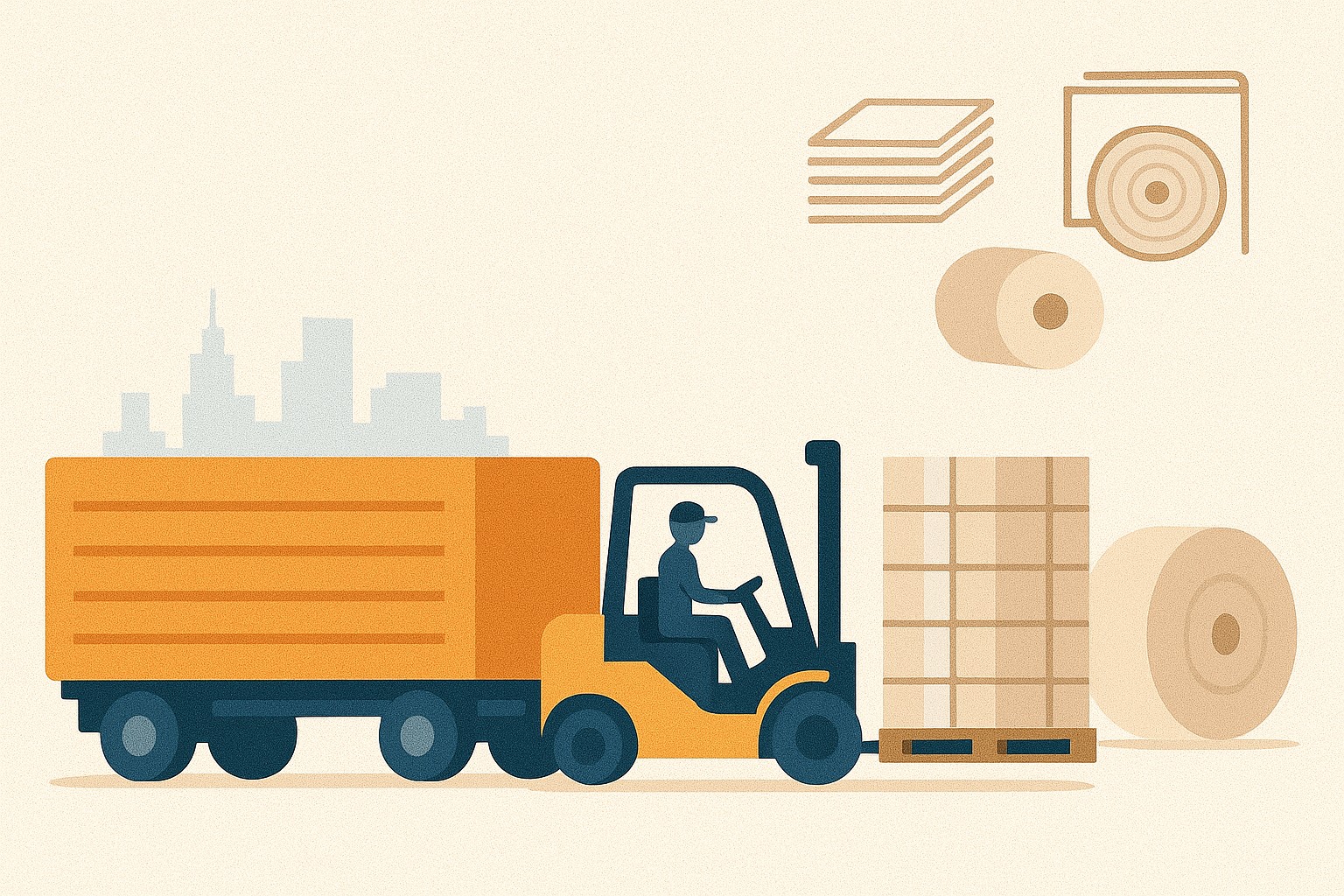Shipping paper and paper products might not sound like the most thrilling topic, but trust us—it’s a backbone of countless industries, from publishing to packaging. Whether you’re moving reams of printer paper, delicate specialty stationery, or corrugated cardboard for e-commerce giants, getting these goods from point A to B efficiently is no small feat. In this comprehensive guide, we’ll unpack the intricacies of transporting paper goods, tackle the unique challenges, and show how Freight SideKick can be your trusty sidekick in mastering this logistics puzzle.
Why Paper Products Matter in Today’s Market
Paper products are everywhere—think office supplies, packaging materials, books, and even the humble tissue box. Despite the digital revolution, the demand for paper hasn’t waned. In fact, with the e-commerce boom, the need for cardboard boxes and protective packaging has skyrocketed. According to industry reports, the global paper packaging market alone is projected to grow at a CAGR of 4.5% through 2030, driven by sustainability trends and online shopping.
This persistent demand means businesses must prioritize reliable freight solutions to keep up with customer expectations. Late deliveries or damaged goods? That’s a fast track to losing trust. Efficient shipping isn’t just a nice-to-have—it’s a competitive edge.
Unique Challenges in Shipping Paper and Paper Products
Transporting paper goods comes with its own set of hurdles. Unlike durable items like metal or plastic, paper products require a delicate balance of cost management, protection, and compliance. Let’s break down the biggest challenges logistics managers face:
- Weight and Bulk: Paper is deceptively heavy. A pallet of printer paper or cardboard can quickly rack up freight costs, especially in Less-than-Truckload (LTL) shipping scenarios where space optimization is key.
- Fragility and Damage Risk: Specialty papers, printed materials, or high-end stationery can tear, crease, or suffer water damage if not handled properly. Proper palletizing and protective packaging are non-negotiable.
- Environmental Impact: Sustainability isn’t just a buzzword—it’s a consumer demand. The paper industry is under pressure to reduce carbon footprints, meaning eco-friendly shipping options like consolidated loads or alternative fuels are gaining traction.
- Regulatory Hurdles: International shipments of paper products often involve customs documentation, tariffs, and compliance with import/export laws—especially for recycled or specialty materials.
Best Practices for Efficient Paper Product Shipping
Overcoming these challenges requires strategy, foresight, and the right partnerships. Here are some tried-and-true best practices to ensure your paper goods arrive on time and intact:
- Invest in Proper Packaging: Use sturdy corrugated boxes, shrink wrap, and corner protectors to safeguard against damage. For fragile items, consider custom crating to minimize movement during transit.
- Leverage Load Optimization: Maximize trailer space by stacking pallets efficiently and avoiding wasted cubic footage. Tools like load planning software can help reduce freight costs.
- Choose the Right Mode of Transport: Depending on volume and urgency, decide between LTL (Less-than-Truckload), PTL (Partial Truckload), FTL (Full Truckload), or even intermodal shipping for long-haul or international deliveries.
- Track and Monitor Shipments: Real-time tracking systems provide visibility into your shipment’s journey, allowing you to address delays or issues before they spiral.
- Partner with Experts: Working with a freight broker or platform like Freight SideKick can simplify the process, offering access to carrier networks, competitive rates, and logistics know-how.
FTL vs PTL vs LTL
| Shipping Method | Description |
|---|---|
| FTL (Full Truckload) | Best for large shipments that fill an entire truck. Cost-effective for high volumes. |
| PTL (Partial Truckload) | Ideal for medium shipments that don’t fill a full truck. Cost-sharing among multiple shippers. |
| LTL (Less-than-Truckload) | Used for smaller shipments that don’t require a full truck. Cost-effective for low-volume shipments. |
Key Considerations for Different Types of Paper Products
Not all paper products are created equal. The shipping approach for bulk newsprint differs vastly from that of high-value art paper. Here’s a quick breakdown of considerations by product type:
| Product Type | Key Shipping Considerations |
|---|---|
| Bulk Paper (e.g., Newsprint, Printer Paper) | Focus on weight management and cost-effective LTL or FTL options. Protect against moisture with weatherproof wrapping. |
| Specialty Paper (e.g., Art Paper, Stationery) | Prioritize protective packaging and temperature-controlled transport if sensitive to humidity or heat. |
| Packaging Materials (e.g., Cardboard, Corrugated Boxes) | Optimize for bulk with efficient palletizing; ensure carriers can handle high-density loads. |
| Recycled Paper Products | Ensure compliance with environmental regulations, especially for international shipments. |
How Freight SideKick Simplifies Paper Product Shipping
At Freight SideKick, we get it—shipping paper products isn’t just about moving stuff; it’s about delivering reliability. Our platform is built to take the headache out of freight logistics, offering tailored solutions for businesses of all sizes. Here’s how we can help:
- Competitive Freight Rates: Our vast network of carriers ensures you get the best rates for LTL, PTL, and FTL — saving you money without sacrificing speed.
- Expert Support: From navigating customs paperwork to choosing the right packaging, our logistics pros are just a call or click away.
- Advanced Tracking Tools: Keep tabs on your shipments 24/7 with real-time updates, so you’re never left guessing where your paper goods are.
- Sustainable Shipping Options: We offer eco-conscious solutions like load consolidation and low-emission carriers to help you meet green goals.
Whether you’re a small publisher shipping limited-edition books or a packaging supplier moving truckloads of cardboard, Freight SideKick customizes solutions to fit your needs. Think of us as your logistics wingman—here to make shipping smoother, smarter, and more cost-effective.
Personalized Assistance
Get a quote today, call 877-345-3838, or email support@freightsidekick.com










